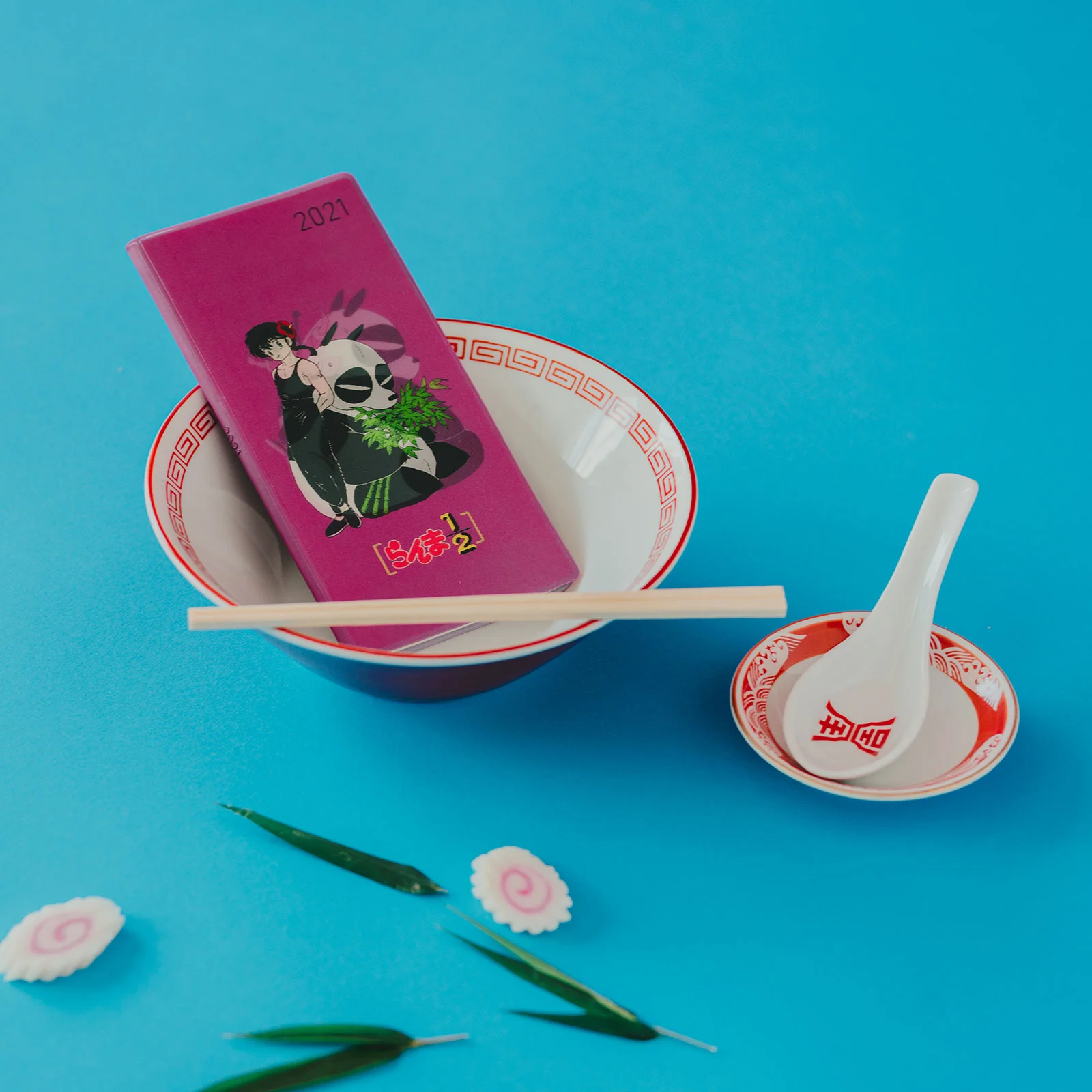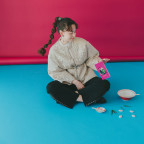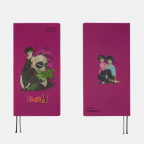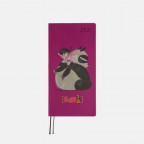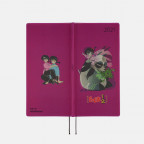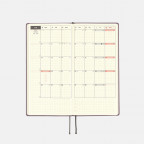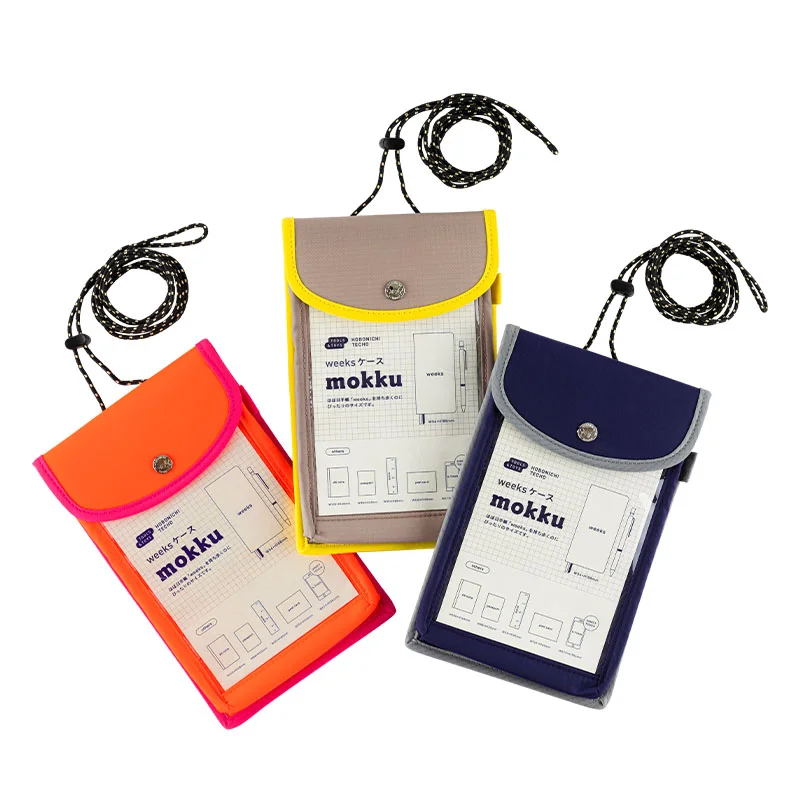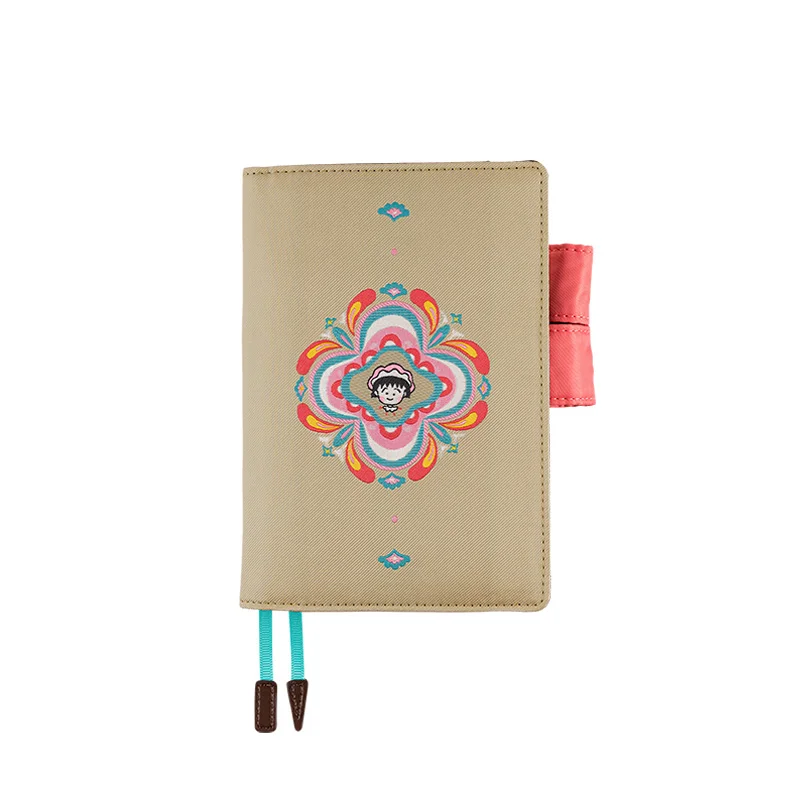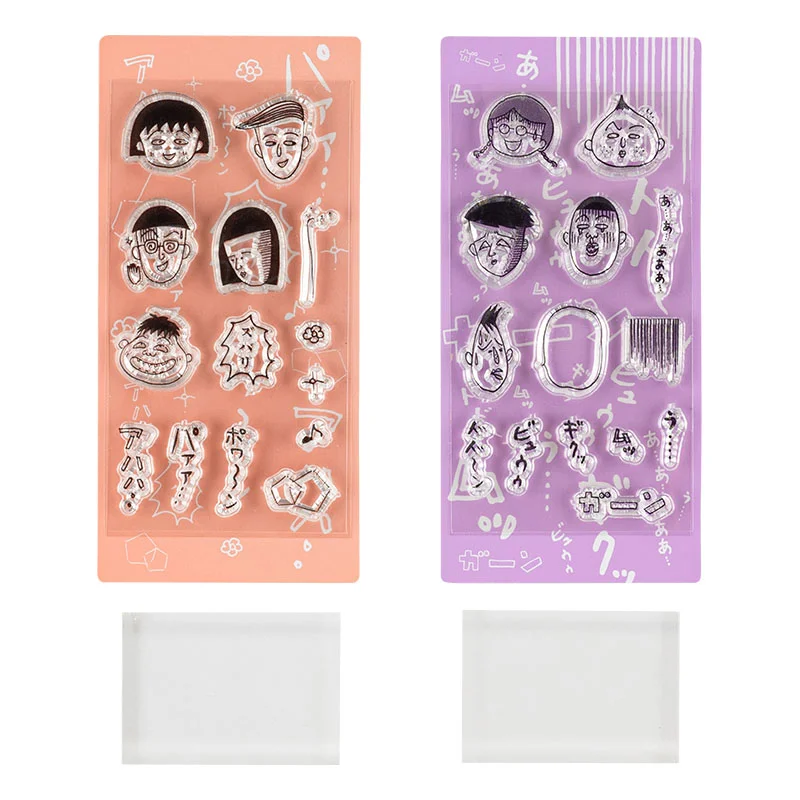Ranma 1/21/2Weeks Book (Japanese)
Even after 20 years of the end of the series, manga Ranma 1/2 continues to be Rumiko Takahashi’s most renowned piece.
The Protagonist Ranma Saotome is turned into a girl when splashed with water, and back to a boy when splashed with warm water. We encapsulated this “transformation” in the form of a Weeks book. When you move the techo book side to side, Ranma switches back and forth between a girl and a boy!
We’ve used lenticular printing that allows printed images to change its look depending on the angle. 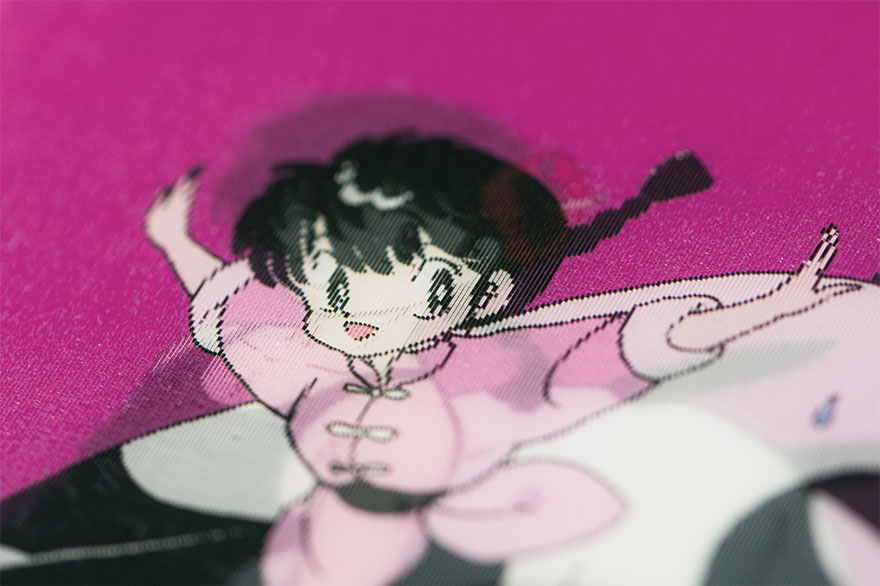
The year 2021 is foil-stamped in black. 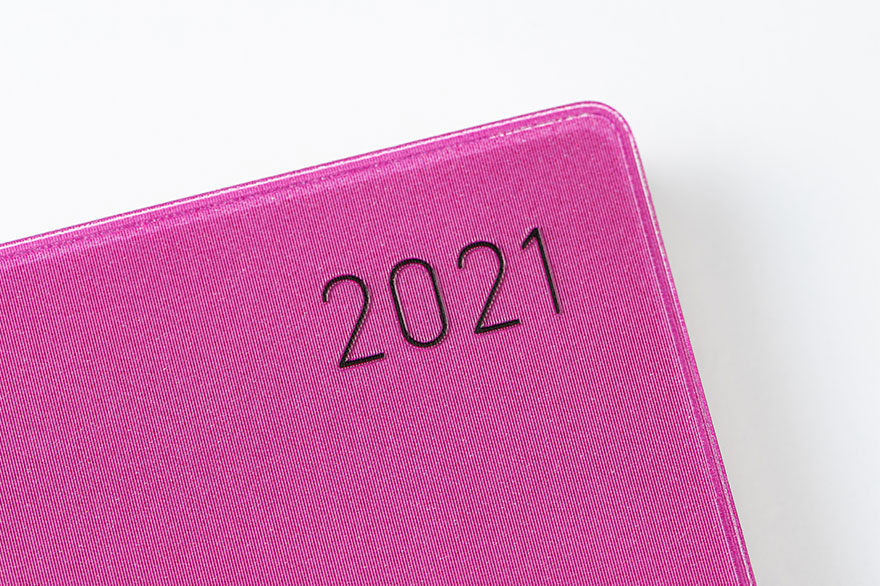
Art Director Gugi Akiyama expressed the crucial characteristic of Ranma 1/2—the transformation—in techo form. With this Weeks book, you’ll be able to transform Ranma without water or warm water.
Because the book cover uses lenticular printing, it’s a slightly stiff softcover book.
When you order this Hobonichi Techo Weeks, you’ll receive a clear, adhesive corner pocket you can stick anywhere you like.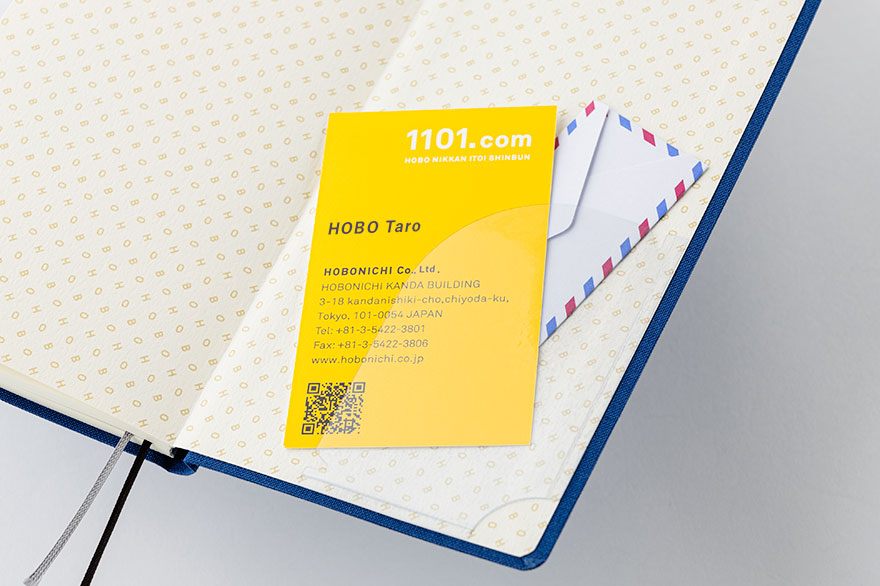
If you’d like storage space or a way to change up the look of your Weeks book, you can customize your book by pairing it with a Weeks cover.
<See Weeks cover lineup>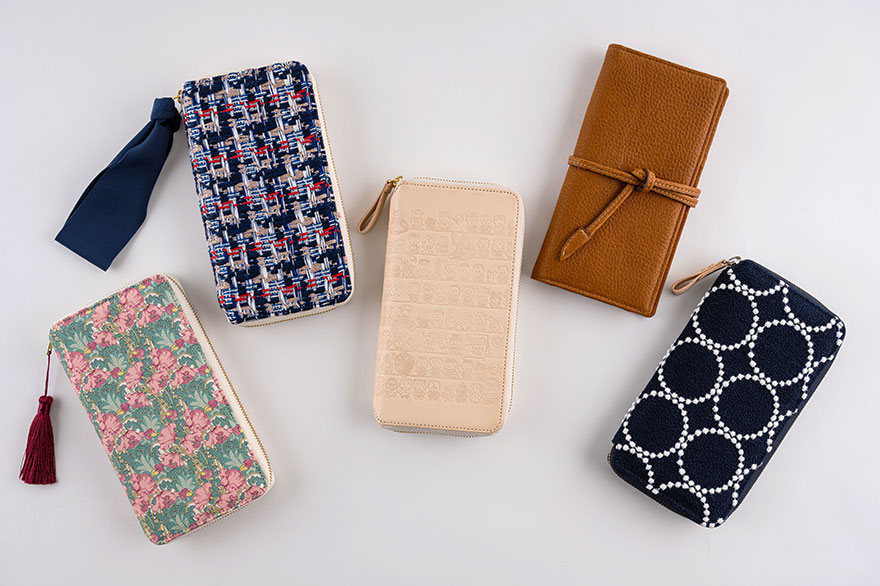
Also available for sale is the Ranma 1/2 Pencil Board.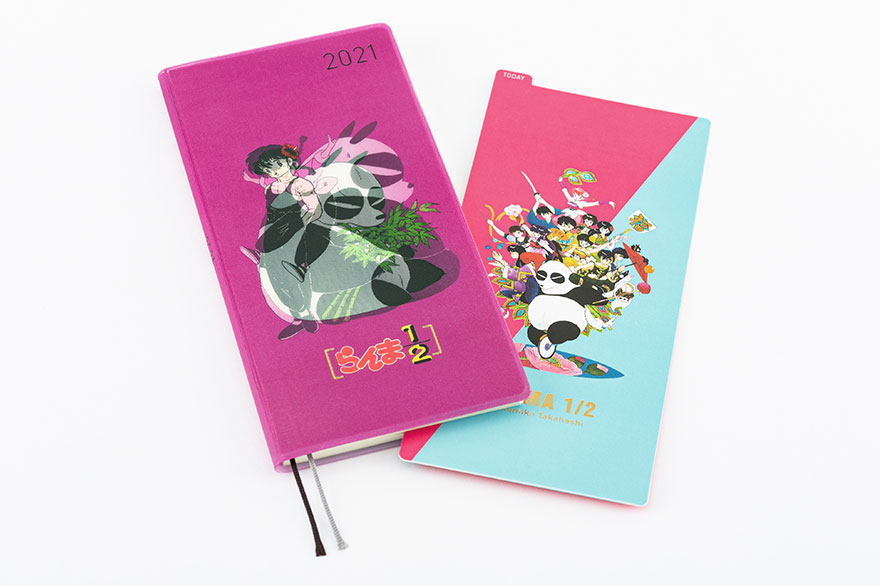
©Rumiko Takahashi / Shogakukan
Staff List
- Photographer
- Styled Images: Nobuki Kawaharazaki / Product Detail: Hiroyuki Oe
- Stylist
- Satomi Kamino
- Makeup & Hair
- Yuka Takamatsu
- Model
- Miiya Kudo (Holiday Management)
![]()
- Ranma 1/21/2Weeks Book (Japanese)
- 2,860
Specifications
- Overview
Size W: 94 x H: 188 x T: 10 mm / W: 3.7" x H: 7.4" x T: 0.4"
*Specifications may vary slightlyWeight Approx. 130 g Main material PVC, paper - Weeks Book (Japanese / April Start)
Language Japanese Pages 240 pages Binding Stitch-binding Paper Type Thin, light Tomoe River paper resistant to bleeding and designed for planners. Graph Paper Size 3.55 mm Yearly Calendar 2020, 2021, 2022 Yearly Index Apr. 2021 - Mar. 2022 (2 pages) Monthly Calendar Mar. 2021 - Apr. 2022 (28 pages) Daily Quotes One per week (Japanese) Weekly Calendar Mar. 1, 2021 - Apr. 3, 2022 (114 pages)
*All weekly pages include quotes.Graph Paper 75 pages Informational Pages Shorthand Note-Taking / Graph Paper / Using Common Items to Measure Size / My 100 / Solar Terms / Weather Terms for your Techo / Basic Posture Techniques / Emergency Preparedness / Age Table / Conversion Chart / Getting the most of Hobonichi / Contact List / Personal Notes Listed Information Week of the year / Rokuyo (traditional Japanese calendar) / Solar terms / Japanese holidays / Moon phase (weekly pages include every phase, monthly calendars only include full and new moon)
*The 2021 Weeks book (April Start) is produced based on information as of September 2020, and therefore does not reflect the amendment in dates of the following national holidays: Marine day, Mountain day, and Sports day. We apologize for the inconvenience caused and ask for your kind understanding.
Please Read Before You Buy
In order to provide you with the most satisfaction for your product, we've compiled a list of warnings, potential issues, and tips to keep in mind for this particular product. Please be sure to read this information carefully before placing your order.
- About the surface fabric (Ranma 1/2)
- The areas near the crease may look white, but this is unavoidable due to how the product is processed.
- Due to the nature of the material, the cover is easily dented, so please be sure not to apply to much pressure. When put together with other products for a long time, it may cause the color to come off or cause change, so please be careful.
- When using in conditions with low temperature, the cover may break due to the nature of the material used, so please use it indoors at a suitable temperature.- Test fountain pens before regular use
The Hobonichi Techo's Tomoe River paper is designed to prevent bleed-through, but some fountain pens and water-based ink pens are not compatible with this paper. When switching to a new pen, we recommend testing the pen somewhere in the book, such as the back memo pages, to see if the ink bleeds through or takes an especially long time to dry.
- Use of Cover on Cover is not recommended
We do not recommend using this cover with the Cover on Cover since the PP coated surface of the cover has a tendency to stick to the soft PVC material used in the Cover on Cover under certain temperature and humidity levels.
- Avoid storing in hot and humid places
Please avoid storing your product in hot, humid places or placing it atop other objects for long periods of time as this may result in lower quality and color stains.


